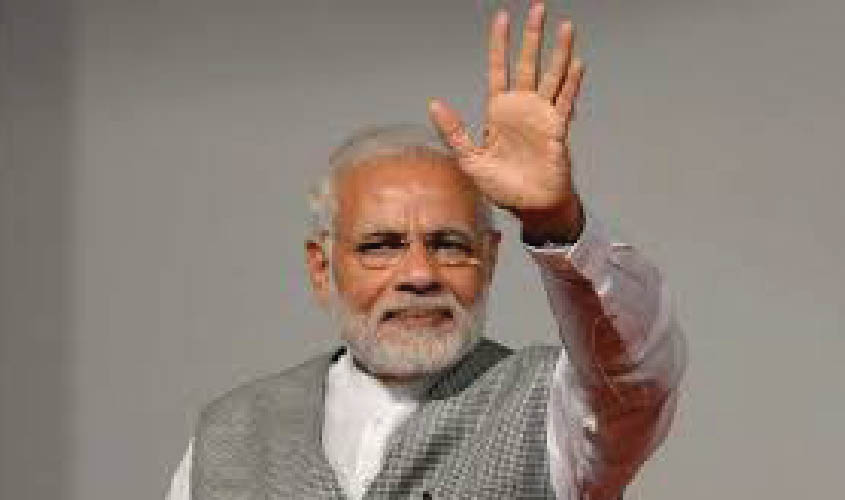Indian economy is still the fastest growing economy in the world, though its GDP growth has slowed down in the last quarter of the FY2018-19 to 7.1. The IMF and the Reserve Bank of India have predicted that it will grow at 7.4% in 2019. The recent state election results, however, have pointed out what is lacking in this high growth economy. There were continued agrarian stress and farmers’ suicides in 2018. On the job front, the youth remained dissatisfied, as 16% of the educated youth remained unemployed (Azim Premji University “State of Working report” 2018). The growth of jobs in the economy has been slow as both private and public sector jobs have been shrinking. The unemployment rate was at 6.7% in November 2018. Around 28.54 million people are unemployed in India today, according to the Centre for Monitoring Indian Economy. Labour participation rate also fell due to demonetisation. Women’s participation in labour force declined more in 2018. The banking sector is also under stress and the government’s ongoing efforts to recapitalise banks have not succeeded in eliminating the mountain of NPAs and there is a liquidity crunch. The failed IL&FS, the mega infrastructure financing services company, has added more problems in the area of finance and aggravated the problem of liquidity in the Non-Banking Financial Companies. They are not able to easily access funds from mutual funds that were involved in debt papers issued by IL&FS and have suffered a damage of Rs 2.4 lakh crore, as large investors pulled out from fixed income schemes. The stressed financial resources have been crimping the expansion and growth of MSMEs as they borrow from the NBFCs extensively. On the investment front, there has been a little improvement in the Gross Fixed Capital Formation, but for much of 2018, slow investment and excess capacity in the industrial sector curbed its growth. Manufacturing growth has been lacklustre though it picked up in November 2018. Jobs for unskilled labour are mainly generated in the manufacturing sector and its slack pace has led to slow absorption of labour. India jumped 23 places to 77th in the World Bank’s global ranking in Ease of Doing Business in 2018. It is a good selling point for attracting FDI. But more structural reforms are needed to enhance the supply of land, strengthen the power sector to ensure continuous supply of power and also expand the reach of formal finance in the rural sector in order to attract more FDI. The service sector grew at a slower pace of 7.5% in Q2 and export earnings declined in 2018. The depreciation of the rupee to near Rs 73 helped in garnering more earnings in IT exports, but oil price rise led to a bloated oil bill. Also due to rupee’s depreciation the prices of all imports have gone up, leading to the widening of the current account deficit at 2.9% of the GDP (Q2). This rise in CAD will put more pressure on the rupee, Foreign Portfolio Investors are likely to withdraw funds from the stock markets to seek higher returns elsewhere. The depreciating rupee will thus give negative signals to the FPIs in the future. 2018 saw the maximum withdrawal of FPIs from the markets at Rs 1 lakh crore, which made it the worst year in terms of FPI investments as compared to the record net inflow of Rs 2 lakh crore into equities and debt securities in 2017. Export prospects will be flattened by the slow global growth in 2019. Private consumption, however, did not go up much in 2018 due to the cautious spending by the farm sector, but public consumption was up. Inflation was kept at bay and retail inflation remained below the targeted rate at 3.3% due to low agricultural prices. Agriculture has grown at a robust rate of 5.3% in Q1 and 3.8% in Q2, but this has not reduced farm distress.
The demand for higher MSPs has been partially met, but farm prices remained below MSP in 2018. This is because the costs in agriculture have gone up, especially for marginal farmers and the government procurement agencies failed to lift their produce in a situation of glut. A mega scheme Ayushman Bharat has been started to reduce the burden of rising costs of healthcare and it might bring relief to the common man or woman. Otherwise, the fruits of growth have remained unequally distributed. Inequality of incomes has soared and the top 10% are getting 73% of India’s wealth (Oxfam 2018). The inequality of income is starkly visible in rural India, where average household income is around Rs 8,931 per month (2016-17), but in big cities live India’s 101-dollar billionaires. This contrast between the rich and the poor is growing with India’s increasing wealth and its aim of becoming a $5 trillion economy in the next two years. It is creating angst and discontent. India rejected the World Bank’s Human Capital Index in which India ranked 115th out of 157 countries. HCI measures the amount of human capital that a child born today can expect to attain by the age of 18. According to its parameters, a child born in India today will be only 44% as productive as she could have been if she enjoyed complete education and full health. In other words, there are grave deficiencies in our education and healthcare systems that are preventing our children from reaching their full potential. Undoubtedly, India needs a better quality of primary education system and healthcare network in rural and urban areas which are grossly inadequate to cater to the needs of the people. The informal sector that absorbs about 90% of the labour force needs attention. It lacks the infrastructure to support millions of informal sector workers who migrate from villages to towns. Adequate housing, easy and cheap transportation, and social safety net for the workers is largely lacking in the informal sector.
Jayshree Sengupta is a noted economist

